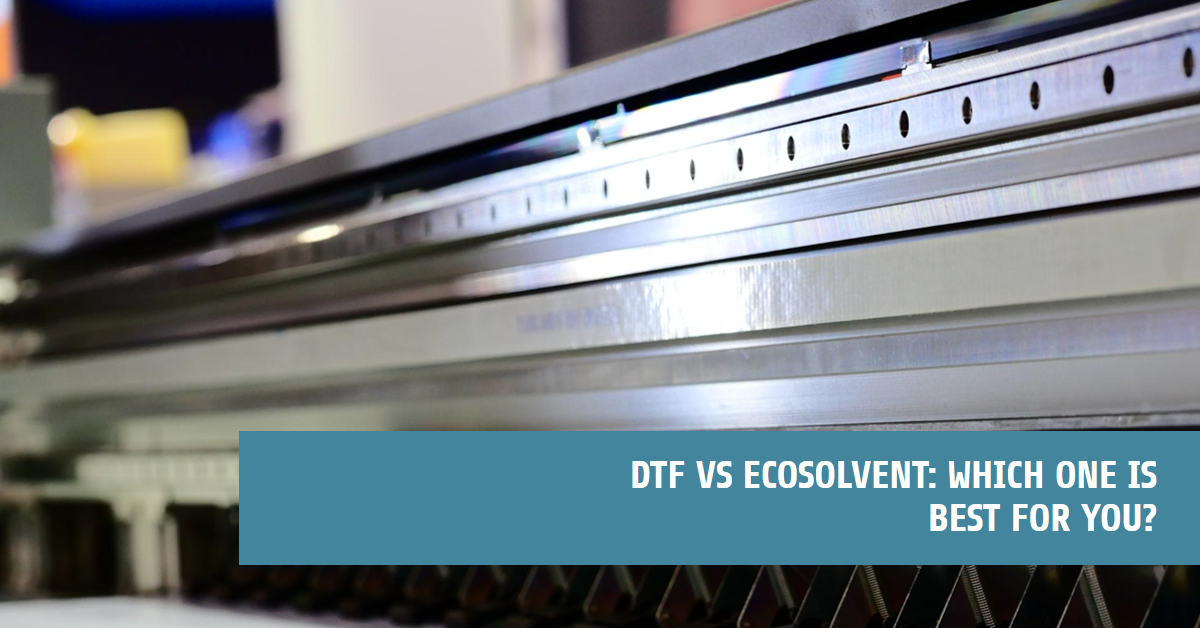T-shirts we wear often have different designs, each created using various printing techniques. For instance, flocking printing gives a design a three-dimensional, plush-like appearance. Digital direct injection is excellent for printing intricate patterns with minimal color variation. Another popular method is heat transfer printing. Each method produces distinct effects on the T-shirt designs.
We will explain the differences between ordinary heat transfer and DTF (direct-to-film) Transfers, focusing specifically on the distinctions between Eco-solvent and DTF Printable Film. This comparison will highlight the unique features and applications of each printing method.
What is the Process Difference Between Eco solvent and DTF Printing?

In thermal transfer heat transfer, the process begins by printing the design onto an Eco solvent material. Once the print dries, an engraving machine traces the outline of the pattern. This step separates the part of the design that will be transferred onto clothing. Next, this separate design is attached to a transfer film. This film, with the design, is then placed onto the clothing or fabric. The design is transferred onto the fabric through high temperature and high-pressure application. After the pattern is successfully transferred, the film is peeled off, completing the heat transfer process. This method is known as "heat transfer" or "Thermal transfer".
Offset heat transfer requires large-scale production due to its process. It uses a large four-color printing machine for printing. After printing, a backing adhesive (back glue) is applied. The costs for plate-making and initial setup are high, making this method cost-effective only for large orders, typically a minimum of 500 pieces. In offset heat transfer, a separate transfer film isn't needed. The printed pattern is already on a film. This film is placed directly on the fabric at the desired location, and then pressed at a high temperature. After pressing, the film is peeled off, leaving the printed design on the fabric. This film used in the process is known as DTF (direct-to-film) Printable Film.
What is the Specific Difference Between Ordinary Thermal Transfer and Offset?

Regarding cost, ordinary heat transfers are more affordable for small quantities, making them a better choice for limited runs. In contrast, offset heat transfers are more economical for larger quantities, suited for bulk production. The complexity of the design, especially its color, also affects cost-effectiveness. For instance, if the design is monochrome (single color), screen printing often becomes the most cost-effective option.
In offset heat transfer, there's no need to add a background color. However, in normal heat transfer, background color is usually added to enhance the engraving of the outline.
Offset heat transfer offers superior color performance, thanks to the large printing press utilized in its process.
Which is Better: DTF or Eco solvent?
Both DTF and eco-solvent have their own strengths and weaknesses. The best choice for you depends on your specific needs and priorities.
If you prioritize outstanding print quality and vibrant colors on fabrics, with moderate durability and environmental concerns, DTF might be ideal.
If you need long-lasting prints for outdoor use or require extensive material versatility, eco-solvent offers a broader range, even if it comes with higher costs and environmental impact.
Ultimately, the most important factor is to match the printing technology to your intended use and budget to achieve the best results.

